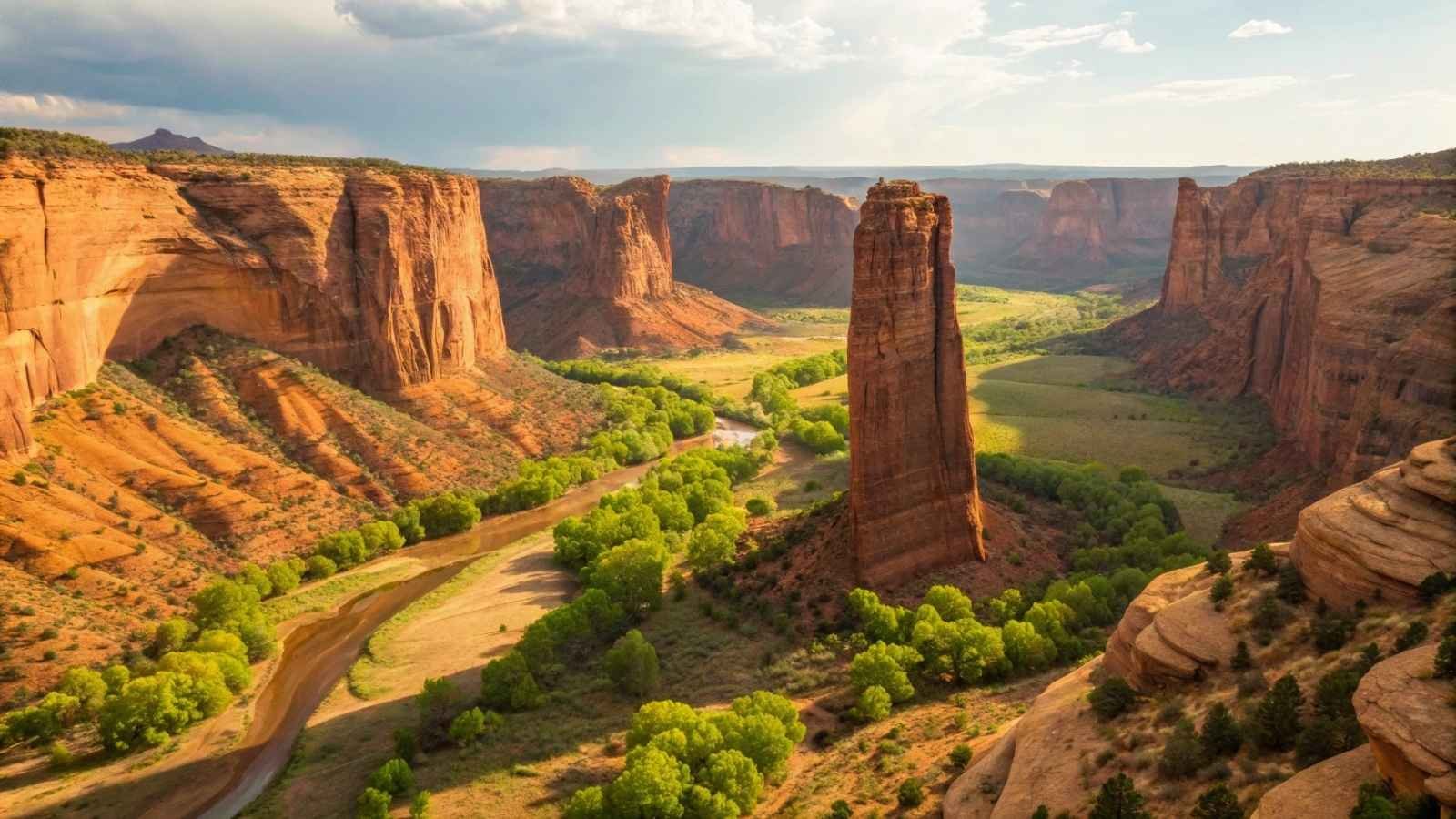
Canyons have a way of stopping us in our tracks—their walls hold stories older than memory, their depths stir a kind of awe that can’t be faked.
While one canyon may take all the fame, the truth is the U.S. is scattered with equally breathtaking gorges that few ever talk about. These places blend raw power with quiet beauty, where rivers still carve and cliffs still tower, yet crowds are nowhere to be found.
If you’ve ever craved wonder without the chaos, these hidden giants are your ticket to landscapes that feel personal, untamed, and unforgettable.
1. Waimea Canyon, Hawaii
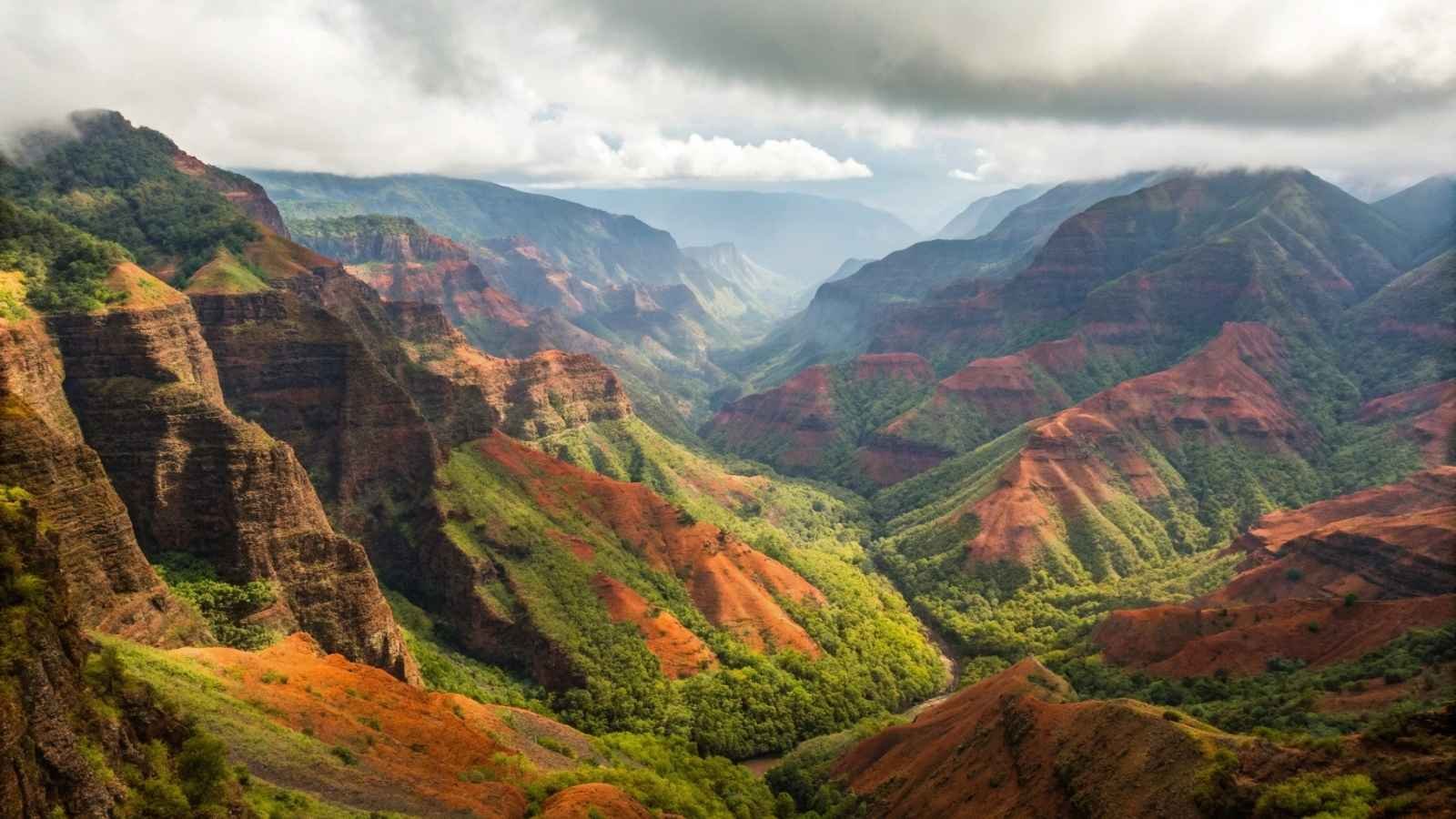
Often called the “Grand Canyon of the Pacific,” Waimea Canyon on Kauai offers a breathtaking blend of rugged cliffs, lush greenery, and cascading waterfalls. At over 10 miles long and 3,600 feet deep, it’s a masterpiece of color—layers of deep reds, earthy browns, and vibrant greens. Unlike the dry, desert tones of the Grand Canyon, Waimea feels alive, with constant rainfall feeding rivers and streams that carve through the landscape.
Hiking trails here are something special. You can wander through routes like the Waimea Canyon Trail to Waipo’o Falls, where every bend offers a surprise—whether that’s a sweeping overlook or a hidden waterfall. What makes it stand out is how quickly you transition from tropical rainforest to open canyon ridges, all within a single day’s hike.
This isn’t a canyon you just view from afar—it pulls you in. Between its panoramic overlooks and the ever-changing play of light on the canyon walls, Waimea feels like a living, breathing work of art. It’s smaller than the Grand Canyon, sure, but its sheer drama and color make it unforgettable.
- Best Months to Visit: April–October (drier weather, clearer views)
- Activities: Hiking, photography, birdwatching, scenic drives along Waimea Canyon Drive
- Nearby Highlight: Kōkeʻe State Park, with its dense forests and high-elevation trails
2. Black Canyon of the Gunnison, Colorado
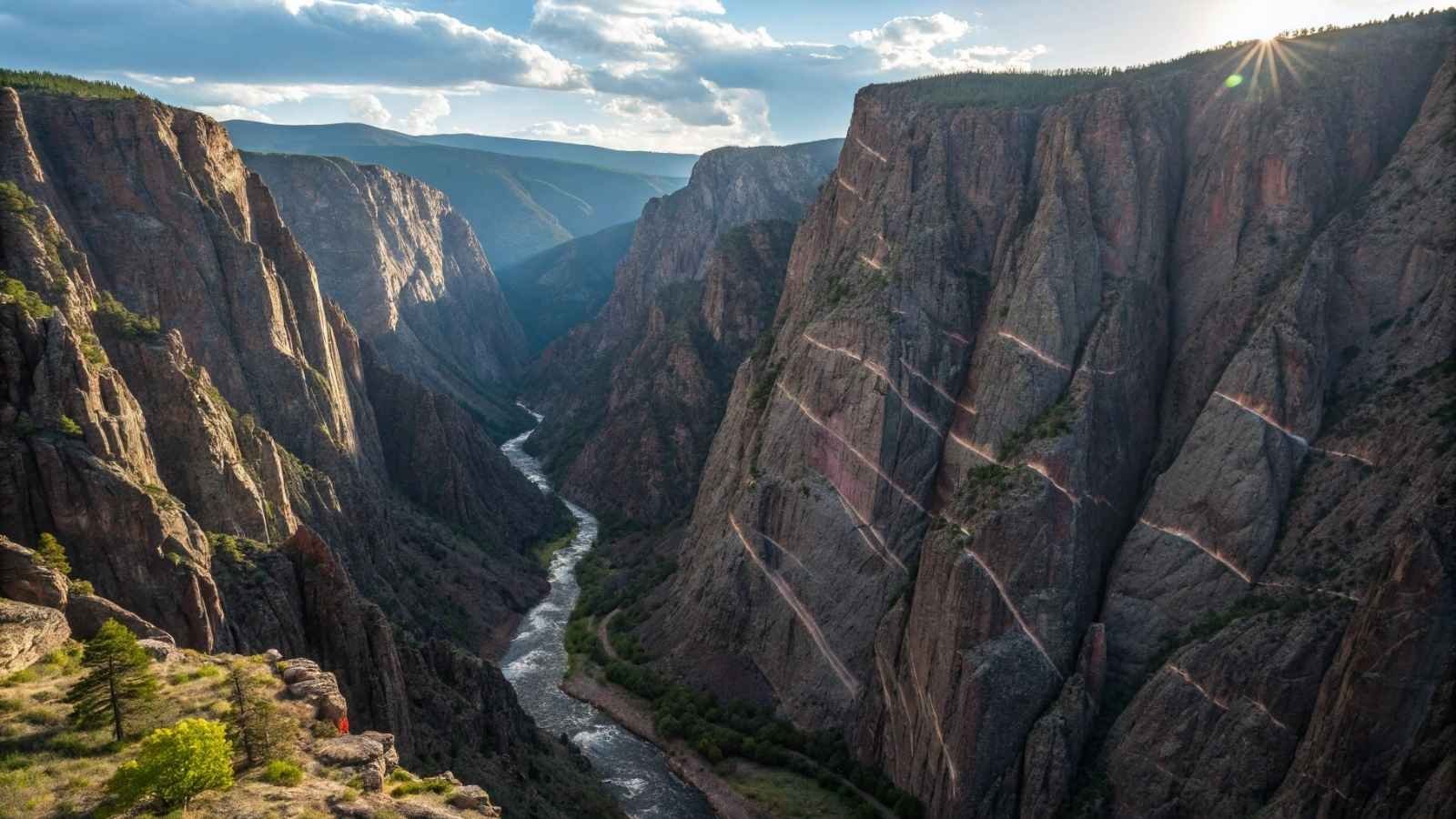
Steep, shadowy, and utterly dramatic—the Black Canyon of the Gunnison is one of the most striking landscapes in Colorado. Its nickname comes from the fact that some parts of the canyon see only 33 minutes of sunlight per day due to its steep, sheer walls. This gives the rock a darker appearance, and the result is a canyon that feels raw and intimidating, in the best way possible.
The Gunnison River at the base has carved these near-vertical cliffs over millions of years, leaving behind one of the steepest canyons in North America. At points, the walls drop nearly 2,700 feet straight down—so close together in places that it feels like the earth has been split with a giant blade. Standing at the rim, you’ll feel small in the best way, as though the canyon is reminding you of nature’s power.
For hikers and adventurers, the Black Canyon offers trails that hug the rim, giving staggering views, as well as routes down to the river for those craving a challenge. But even just stopping at overlooks like Pulpit Rock or Painted Wall View—where Colorado’s tallest cliff face rises—is enough to leave you speechless.
- Best Months to Visit: May–September (warmer, with accessible trails)
- Activities: Hiking, stargazing (it’s an International Dark Sky Park), kayaking (expert only), camping
- Nearby Highlight: The town of Montrose, with cozy eateries and outdoor outfitters
3. Palo Duro Canyon, Texas
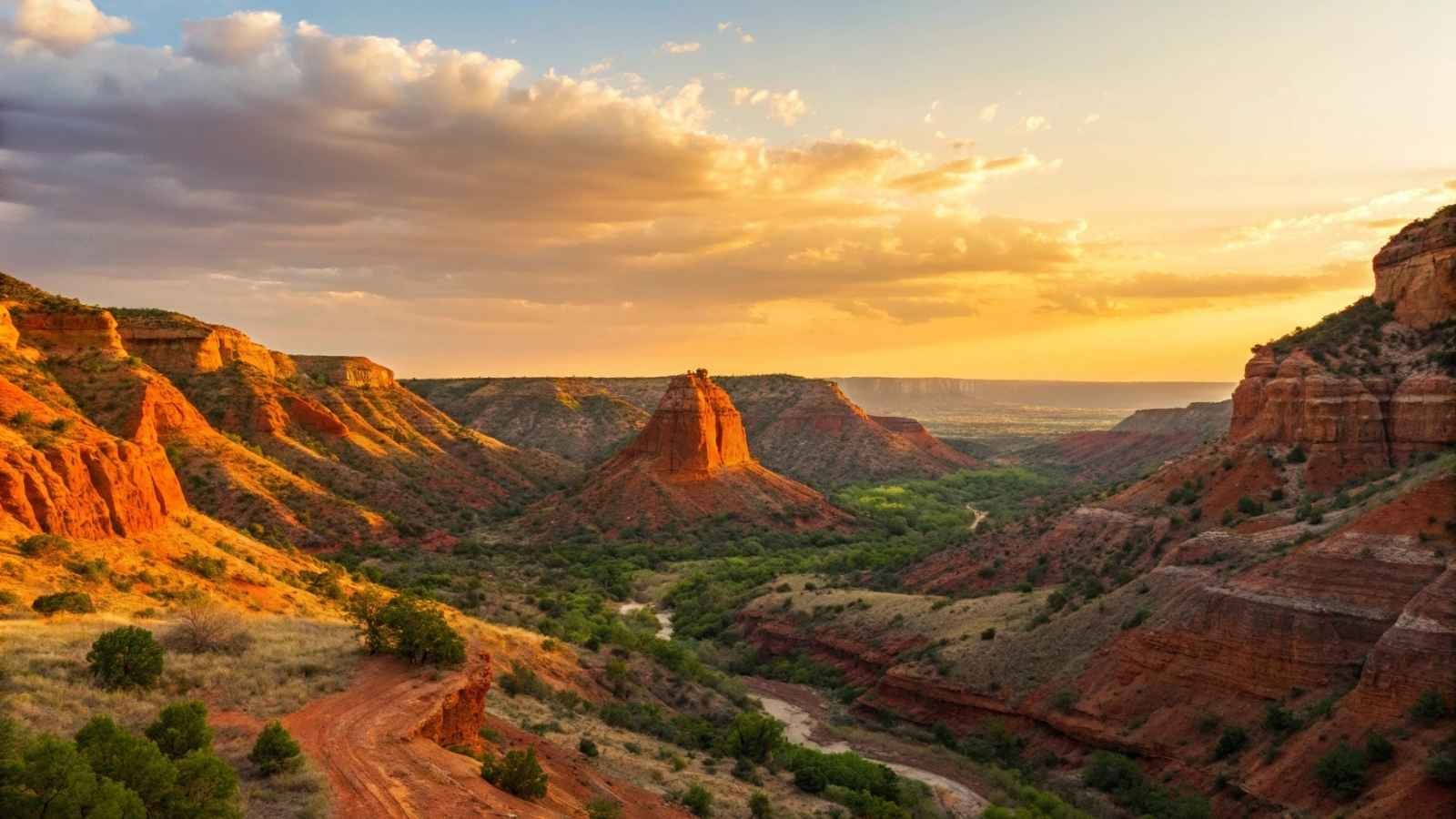
Known as the “Grand Canyon of Texas,” Palo Duro is the second-largest canyon in the U.S., stretching over 120 miles long and up to 20 miles wide. What sets it apart is its rugged yet warm beauty, with striking red rock formations, hoodoos, and colorful cliffs glowing under the Texas sun. This canyon has a way of surprising visitors—because most people don’t expect such a massive landscape hidden away in the Texas Panhandle.
The hiking and biking trails here take you deep into the heart of the canyon. The most famous formation, The Lighthouse, is a towering rock spire that’s become a must-see for adventurers and photographers. The trail to reach it is moderately challenging, but the payoff is worth every step. Palo Duro is also rich in history; Native Americans, cowboys, and settlers have all left their mark here.
What really makes Palo Duro shine, though, is how accessible it feels. You don’t need to be an expert hiker to explore—it has a welcoming mix of scenic drives, picnic areas, and short trails alongside its more adventurous routes. And in summer, you’ll even find outdoor theater productions under the stars, adding a cultural touch to the natural grandeur.
- Best Months to Visit: March–May, September–November (summer is brutally hot)
- Activities: Hiking, mountain biking, horseback riding, camping
- Nearby Highlight: The quirky city of Amarillo, with its famous Cadillac Ranch
4. Canyon de Chelly, Arizona
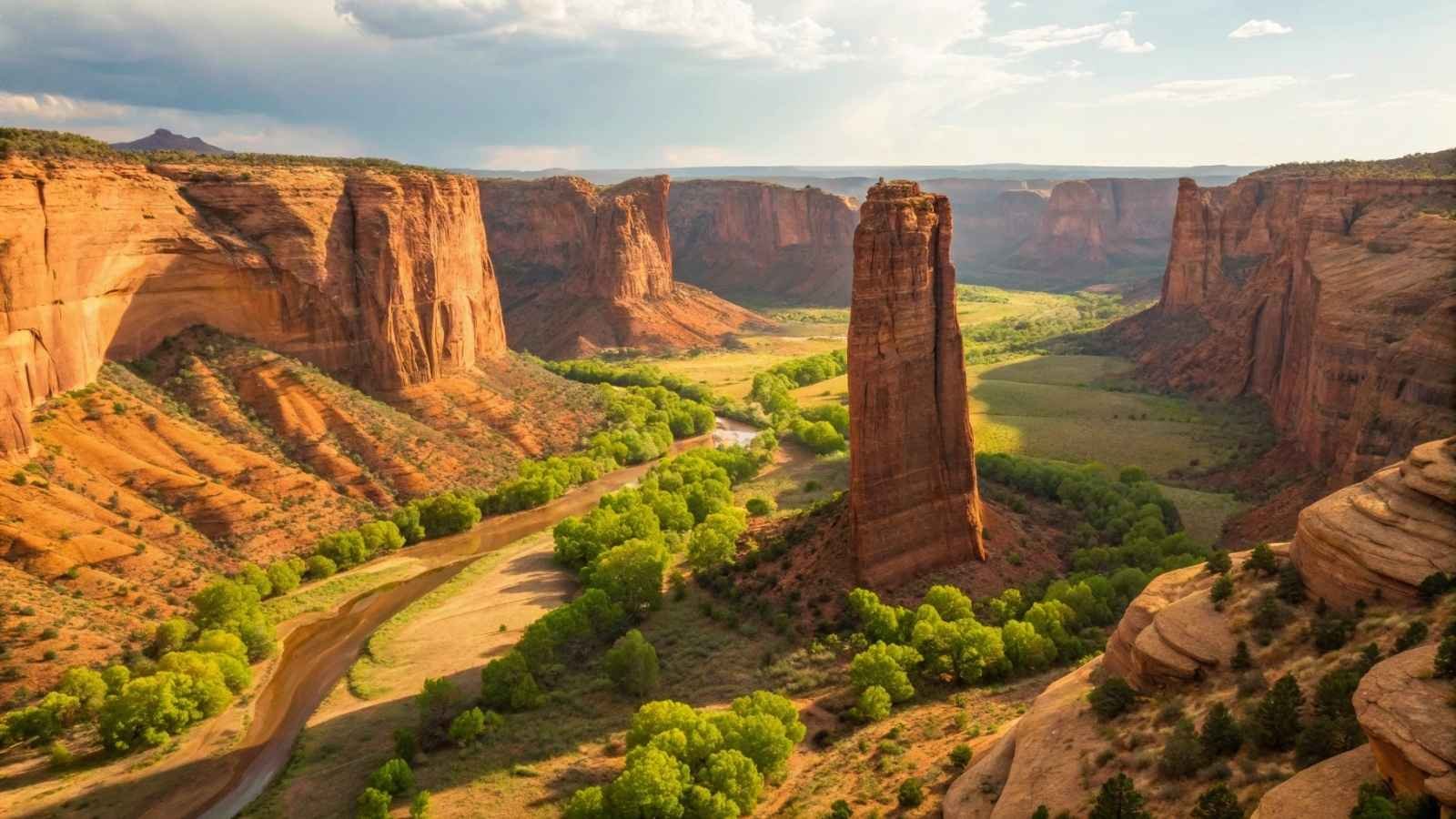
Canyon de Chelly (pronounced “de-SHAY”) is a place where natural beauty and cultural history come together in a profound way. Located in northeastern Arizona, it has been continuously inhabited for nearly 5,000 years, making it one of the longest-inhabited areas in North America. The Navajo Nation still lives and farms here, adding a living cultural layer to the stunning sandstone cliffs.
The canyon itself features towering red walls, deep valleys, and cliff dwellings built by the Ancestral Puebloans. Some of the highlights include Spider Rock, a dramatic 800-foot spire that seems to reach for the sky. Each bend in the canyon feels alive with stories—whether told through petroglyphs carved into the rock or the oral traditions shared by Navajo guides.
Visiting Canyon de Chelly feels different from other canyons because you’re not just observing geology—you’re stepping into a landscape filled with heritage. Guided tours, often led by Navajo locals, provide a deeper perspective on the canyon’s significance, turning a scenic trip into an immersive cultural experience.
- Best Months to Visit: April–October (mild temperatures)
- Activities: Guided jeep or horseback tours, hiking, photography
- Nearby Highlight: Chinle, Arizona, the gateway town for tours and Navajo crafts
5. Kings Canyon, California
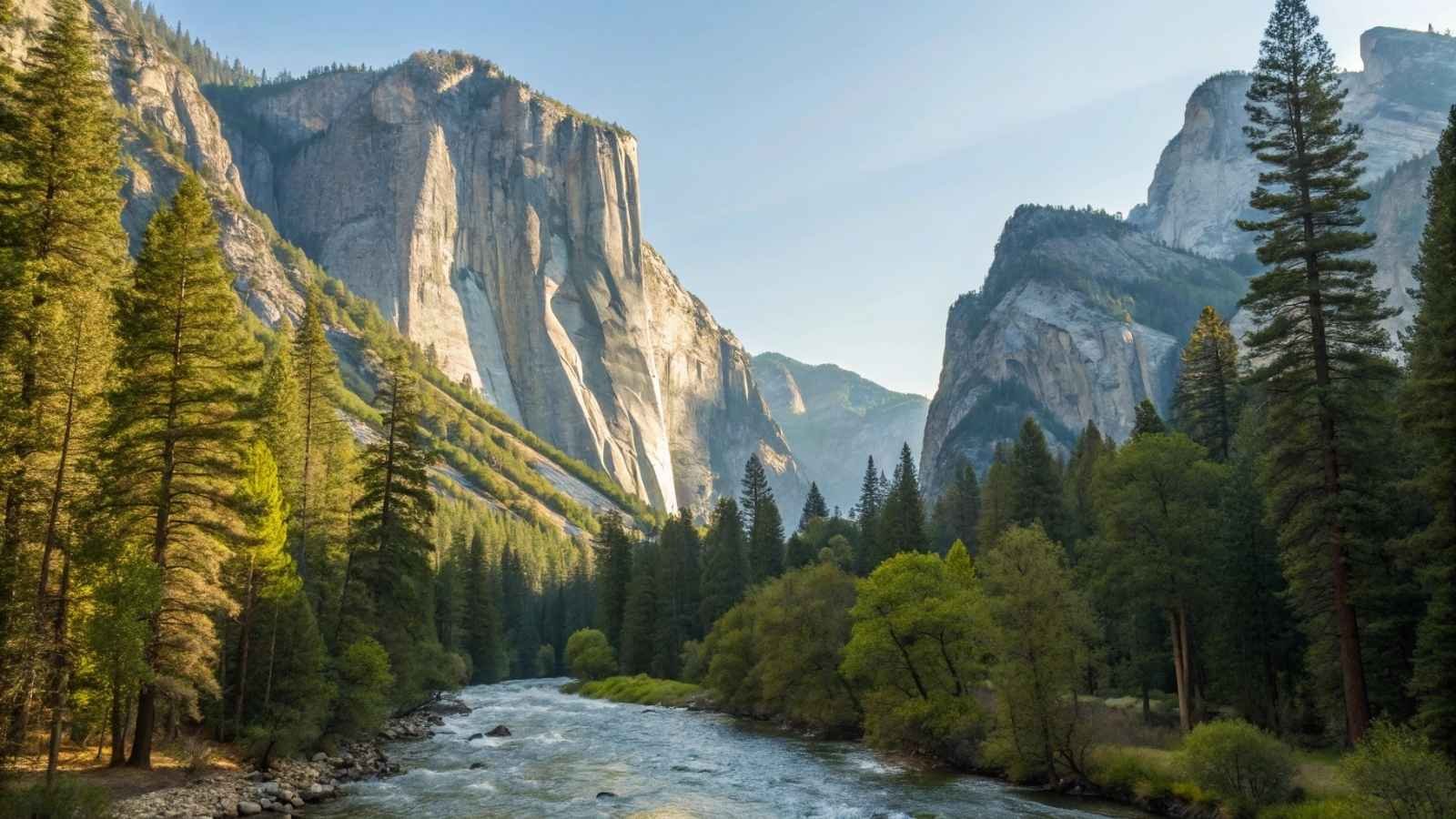
Tucked away in the Sierra Nevada, Kings Canyon is often overshadowed by its neighbor, Yosemite—but those who venture here discover one of the most spectacular glacially carved canyons in North America. With granite cliffs soaring over 8,000 feet high, roaring rivers, and vast groves of sequoias, it combines sheer canyon drama with the serenity of alpine wilderness.
The Kings River slices through the canyon, and in spring it rages with snowmelt, creating waterfalls and rapids that thunder through the valley. Hiking here ranges from easy riverside strolls to demanding backcountry treks that climb into high alpine meadows dotted with wildflowers. For anyone who loves Yosemite but dislikes the crowds, Kings Canyon feels like the secret twin—wilder, quieter, and just as grand.
What’s special about Kings Canyon is the sense of scale—it’s not just one viewpoint, but a full immersion into wilderness. The Road’s End area offers incredible access into the heart of the canyon, and once you step onto a trail, you’ll quickly realize this is a place built for both soul-refreshing walks and serious adventure.
- Best Months to Visit: June–September (snow can linger into late spring)
- Activities: Hiking, camping, river rafting, and sequoia grove exploration
- Nearby Highlight: Sequoia National Park, with its giant trees and scenic drives
6. Hells Canyon, Idaho/Oregon
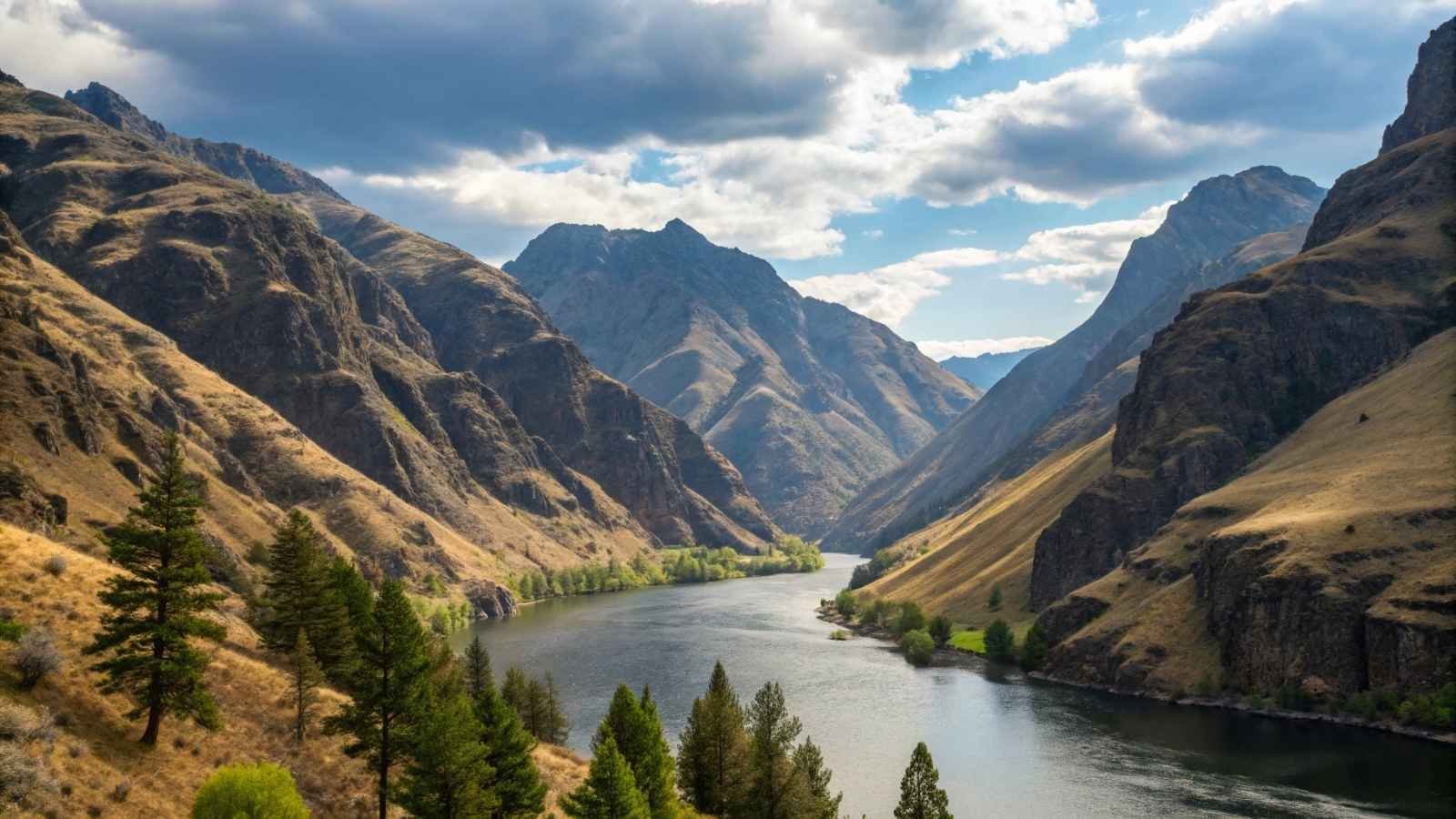
Deeper than the Grand Canyon, Hells Canyon stretches along the border of Idaho and Oregon, plunging over 7,900 feet from rim to river. Its sheer scale is staggering, but unlike the Grand Canyon’s arid desert, this gorge is alive with forests, wild rivers, and rolling hillsides that feel almost untamed. It’s the kind of place where you feel the wilderness pressing in from every side.
The mighty Snake River runs through the heart of Hells Canyon, carving the rugged walls and offering thrilling opportunities for whitewater rafting. Adventurers flock here for multi-day rafting trips, where nights are spent camping under starry skies and days are filled with navigating rapids framed by towering cliffs. Even if rafting isn’t your style, scenic overlooks along the Hells Canyon Scenic Byway showcase the canyon’s grandeur without requiring a paddle.
Hells Canyon is also steeped in history. Ancient petroglyphs carved by Native peoples still mark the cliffs, and old homesteads stand as reminders of early settlers who tried to tame this wild place. Between the natural drama and cultural richness, it’s a canyon that feels both immense and intimate.
- Best Months to Visit: May–October (spring and early fall are especially pleasant)
- Activities: Rafting, jet boating, fishing, hiking, scenic drives
- Nearby Highlight: Wallowa Mountains in Oregon, often called the “Swiss Alps of Oregon”
7. Santa Elena Canyon, Texas
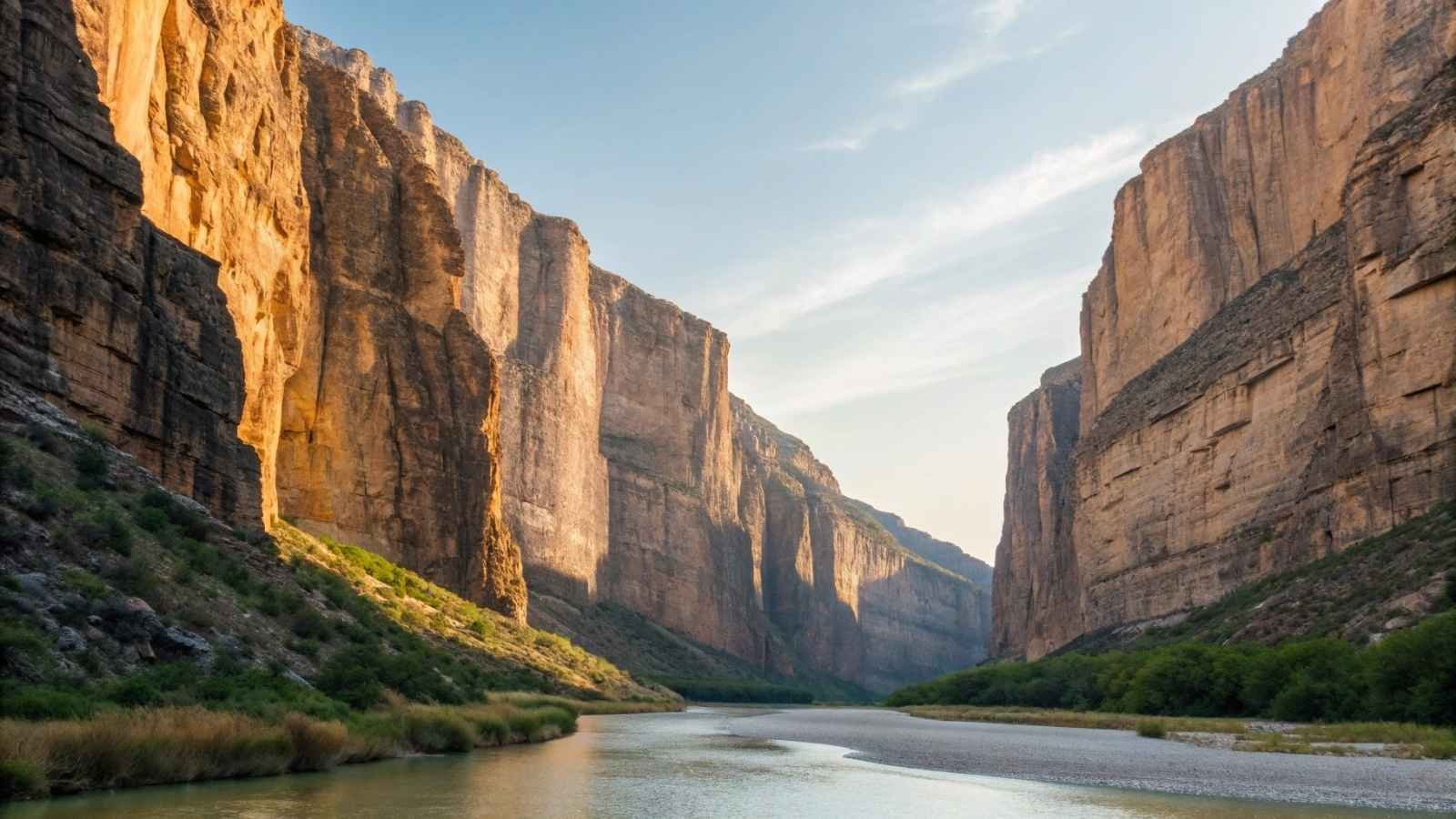
Tucked inside Big Bend National Park, Santa Elena Canyon offers one of the most jaw-dropping views in Texas. The Rio Grande slices through massive limestone walls that rise 1,500 feet straight up, creating a canyon that feels like a hidden cathedral of stone and water. Despite its size, the canyon is surprisingly peaceful, with the river reflecting golden light off the cliffs in the evenings.
One of the best ways to experience Santa Elena is by floating the Rio Grande—kayaking or canoeing between the towering walls. The sense of scale from the water is incredible, as every paddle stroke takes you deeper into a corridor of stone. For those who prefer to stay dry, the Santa Elena Canyon Trail offers a relatively short but unforgettable hike, leading to a breathtaking overlook where the river bends dramatically through the canyon.
The combination of desert landscape, river life, and towering cliffs makes Santa Elena stand out. It’s both rugged and serene, a canyon that feels worlds away yet surprisingly accessible for anyone visiting Big Bend.
- Best Months to Visit: October–April (cooler weather; summers can be scorching)
- Activities: Canoeing, kayaking, hiking, scenic drives
- Nearby Highlight: Chisos Mountains, offering a completely different alpine experience within the same park
8. Bryce Canyon, Utah
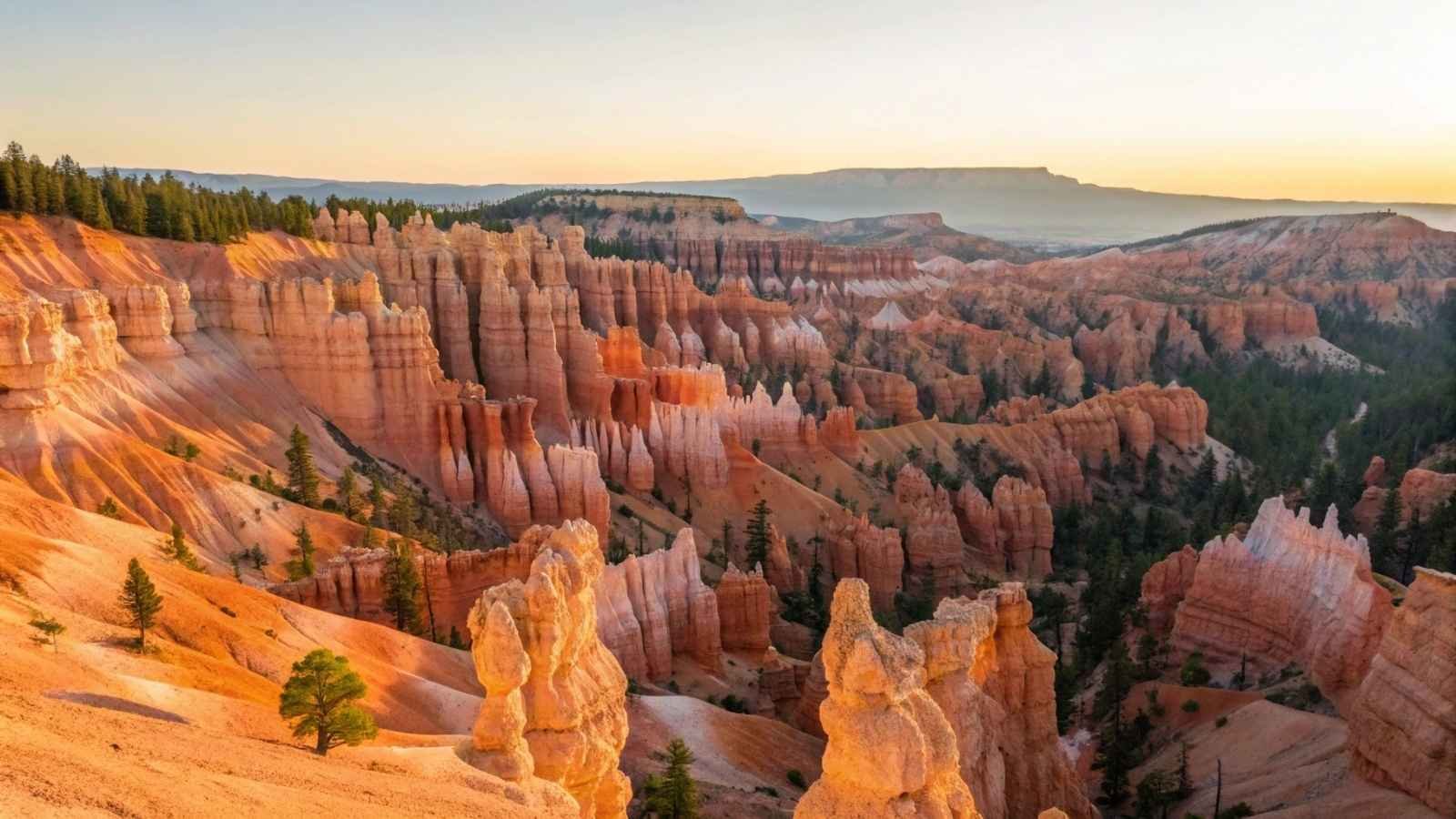
Technically a series of natural amphitheaters rather than a single canyon, Bryce Canyon is world-famous for its hoodoos—those whimsical, spire-like rock formations that rise like stone sentinels. The effect is surreal, almost otherworldly, and it easily rivals the Grand Canyon in terms of jaw-dropping scenery, even if it looks completely different.
Standing at an overlook like Bryce Point at sunrise, you’ll see thousands of hoodoos glowing in shades of orange and pink. The landscape shifts throughout the day as light dances across the spires, creating endless photographic opportunities. For a closer perspective, trails like Navajo Loop and Queen’s Garden weave through the hoodoo “forest,” making you feel like you’re walking through a fantasy landscape.
What sets Bryce apart is its combination of accessibility and uniqueness. Unlike the vast sprawl of the Grand Canyon, Bryce is compact enough to explore in just a day or two, but its visual impact is outsized. And because it sits at high elevation, the stargazing here is some of the clearest in the country.
- Best Months to Visit: May–September (warm weather) or winter (snow adds magic, fewer crowds)
- Activities: Hiking, horseback riding, stargazing, photography
- Nearby Highlight: Scenic drive along Highway 12, one of the most beautiful routes in the U.S.
9. Zion Canyon, Utah
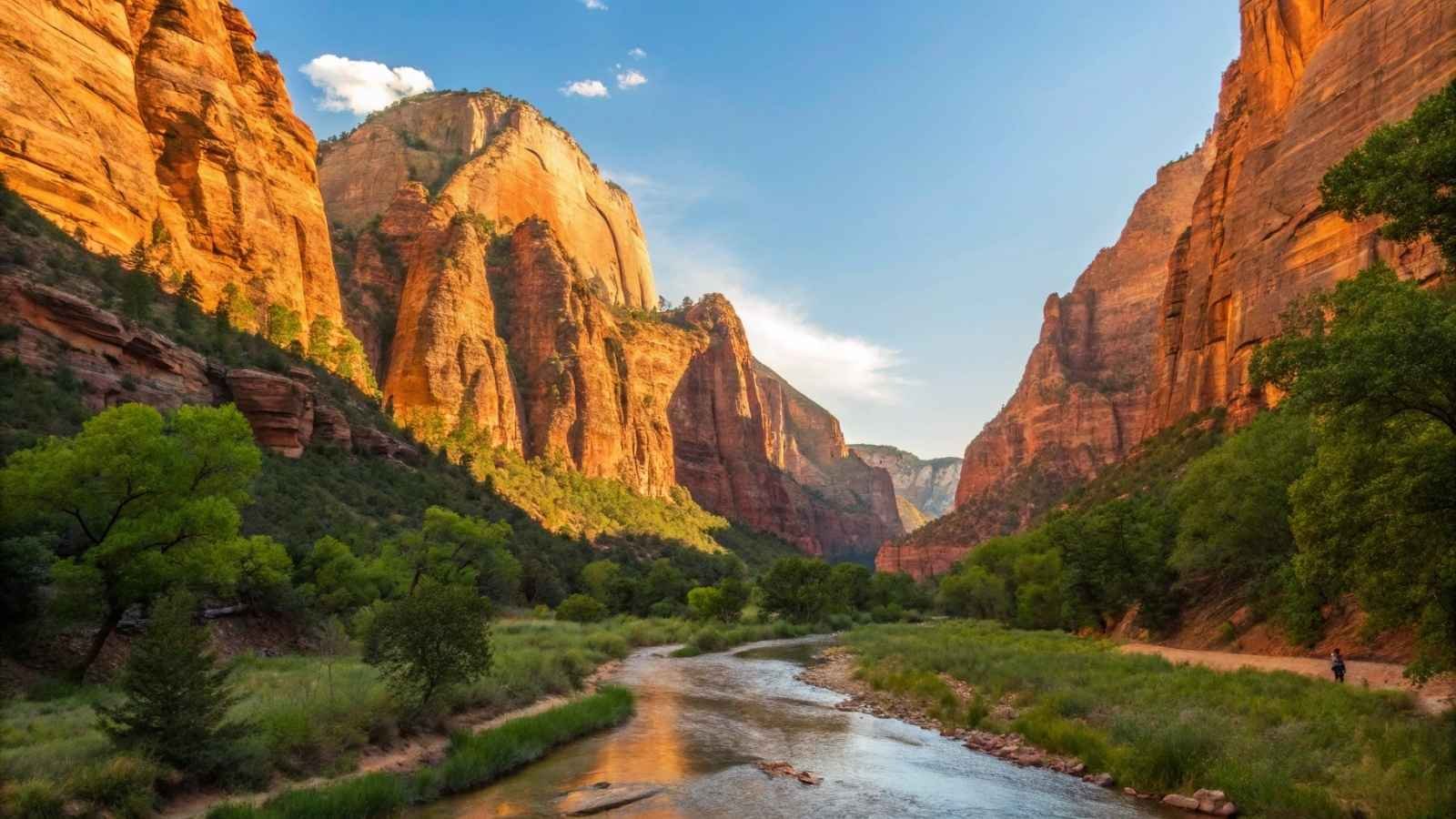
Zion National Park’s Zion Canyon is one of the most dramatic landscapes in the Southwest, with its towering red and white sandstone cliffs rising high above the Virgin River. Unlike the vast emptiness of the Grand Canyon, Zion feels intimate—you’re right in the heart of the canyon, walking or hiking beside the river with sheer walls towering above you.
Two hikes define Zion’s character. The Narrows, where you wade directly through the Virgin River between canyon walls just feet apart, is a unique and thrilling experience. On the other hand, Angels Landing delivers heart-pounding views from a narrow spine of rock with sheer drop-offs on both sides. Together, they showcase the canyon’s wild mix of challenge and beauty.
The lushness of Zion surprises many visitors. Hanging gardens sprout from cliff faces, cottonwoods shade the riverbanks, and seasonal waterfalls tumble from the walls after rain. It’s a canyon that feels alive, and every season brings a new layer of beauty.
- Best Months to Visit: March–May and September–November (pleasant temps, fewer crowds)
- Activities: Hiking (The Narrows, Angels Landing, Observation Point), canyoneering, rock climbing, camping
- Nearby Highlight: Kolob Canyons, a quieter section of Zion with equally dramatic views
10. Grand Staircase–Escalante Canyons, Utah
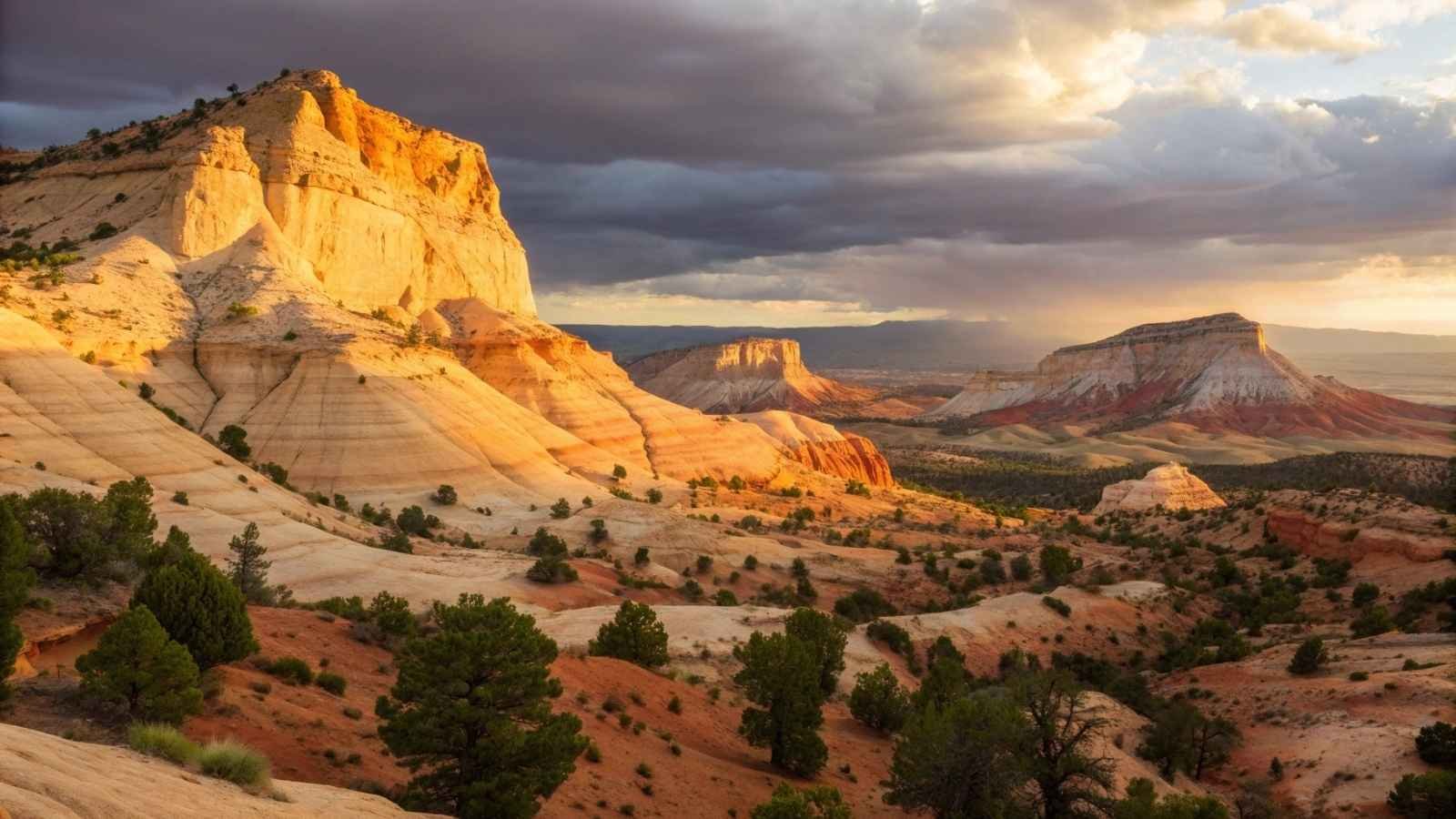
The Grand Staircase–Escalante National Monument is a maze of hidden slot canyons, arches, and sandstone cliffs stretching across southern Utah. Unlike the Grand Canyon’s singular immensity, Escalante offers a playground of smaller, intimate canyons—each with its own character. It’s less about standing at one viewpoint and more about discovery, one hidden trail at a time.
Some of the most popular spots include Spooky and Peekaboo Slot Canyons, where you squeeze through twisting passages barely wide enough for a person to pass. Then there’s Calf Creek Falls, a stunning waterfall hidden in a desert canyon oasis. The sheer variety here means you could spend days exploring and still only scratch the surface.
What makes Escalante so rewarding is its sense of adventure. The area is less developed and less crowded than other Utah parks, so hikes feel raw and exploratory. The silence in some of the narrower canyons is profound—you feel like you’ve stepped into a secret world carved by time and water.
- Best Months to Visit: April–June, September–October (summer is brutally hot)
- Activities: Slot canyon hiking, backpacking, photography, camping
- Nearby Highlight: Scenic Byway 12, with sweeping views over the canyons and mesas
11. Little River Canyon, Alabama
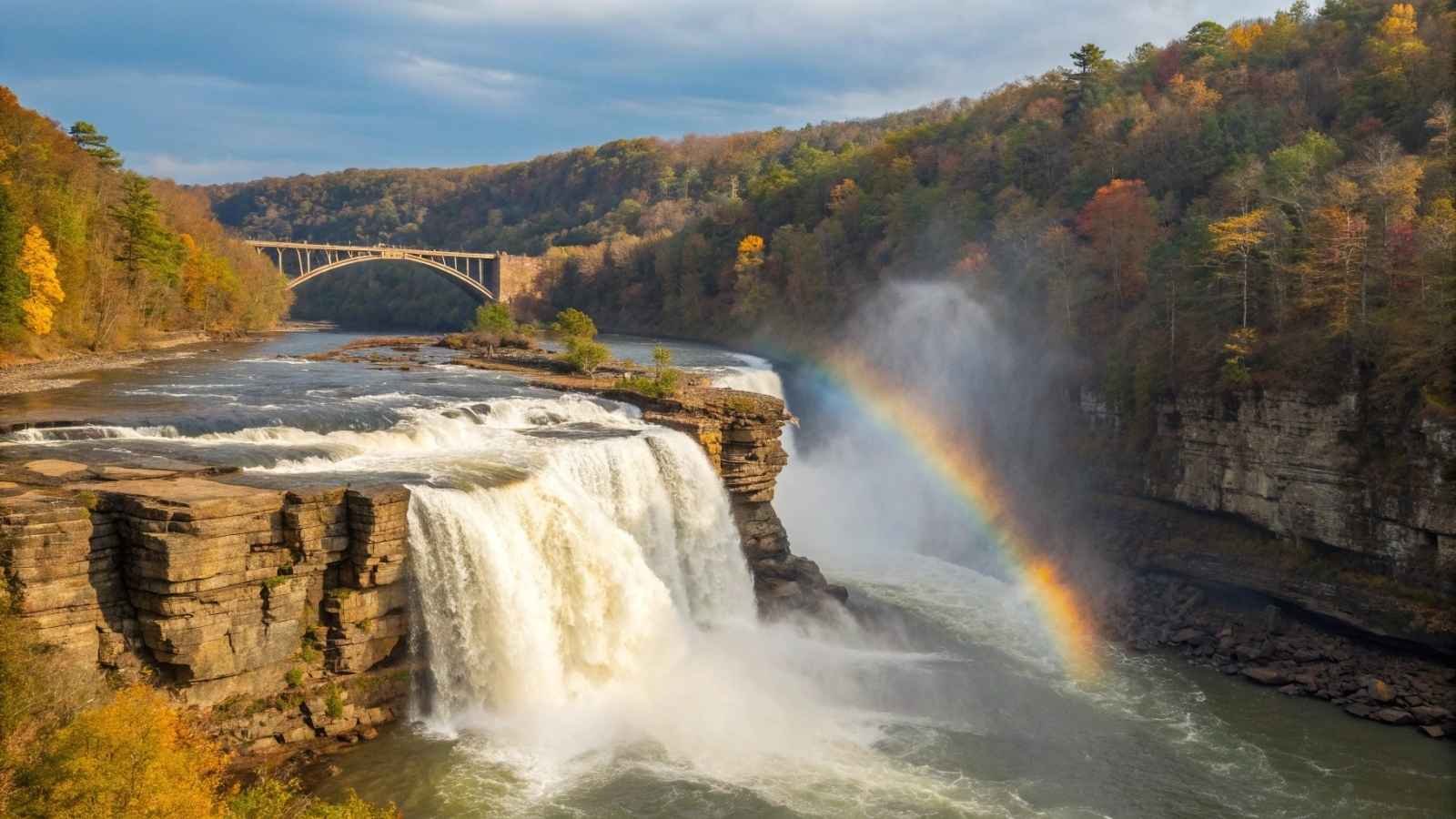
In the heart of the South, Little River Canyon feels like a hidden sanctuary carved into the sandstone plateaus of Alabama. The Little River, unique because it flows almost its entire length on top of a mountain, slices through the terrain to create cliffs, gorges, and waterfalls that rival anything out West. This canyon proves you don’t need desert landscapes to be wowed—lush greenery frames the cliffs, and wildflowers bring bursts of color in spring.
The star attraction is Little River Falls, a broad waterfall tumbling into the canyon, easily accessible for visitors of all ages. Beyond that, winding scenic drives hug the rim, while adventurous trails dip down into the canyon’s depths. In summer, natural swimming holes draw crowds looking to cool off, turning this into both a scenic and recreational hotspot.
What makes this canyon special is its accessibility for families and everyday travelers. You can drive, hike, or even just stop for a picnic while soaking up views that feel surprisingly grand. For many who stumble upon it, Little River Canyon feels like discovering Alabama’s best-kept secret.
- Best Months to Visit: April–May and October–November (waterfalls full, foliage stunning)
- Activities: Hiking, swimming, kayaking, scenic drives, rock climbing
- Nearby Highlight: Desoto State Park, with trails and waterfalls galore
12. Linville Gorge, North Carolina
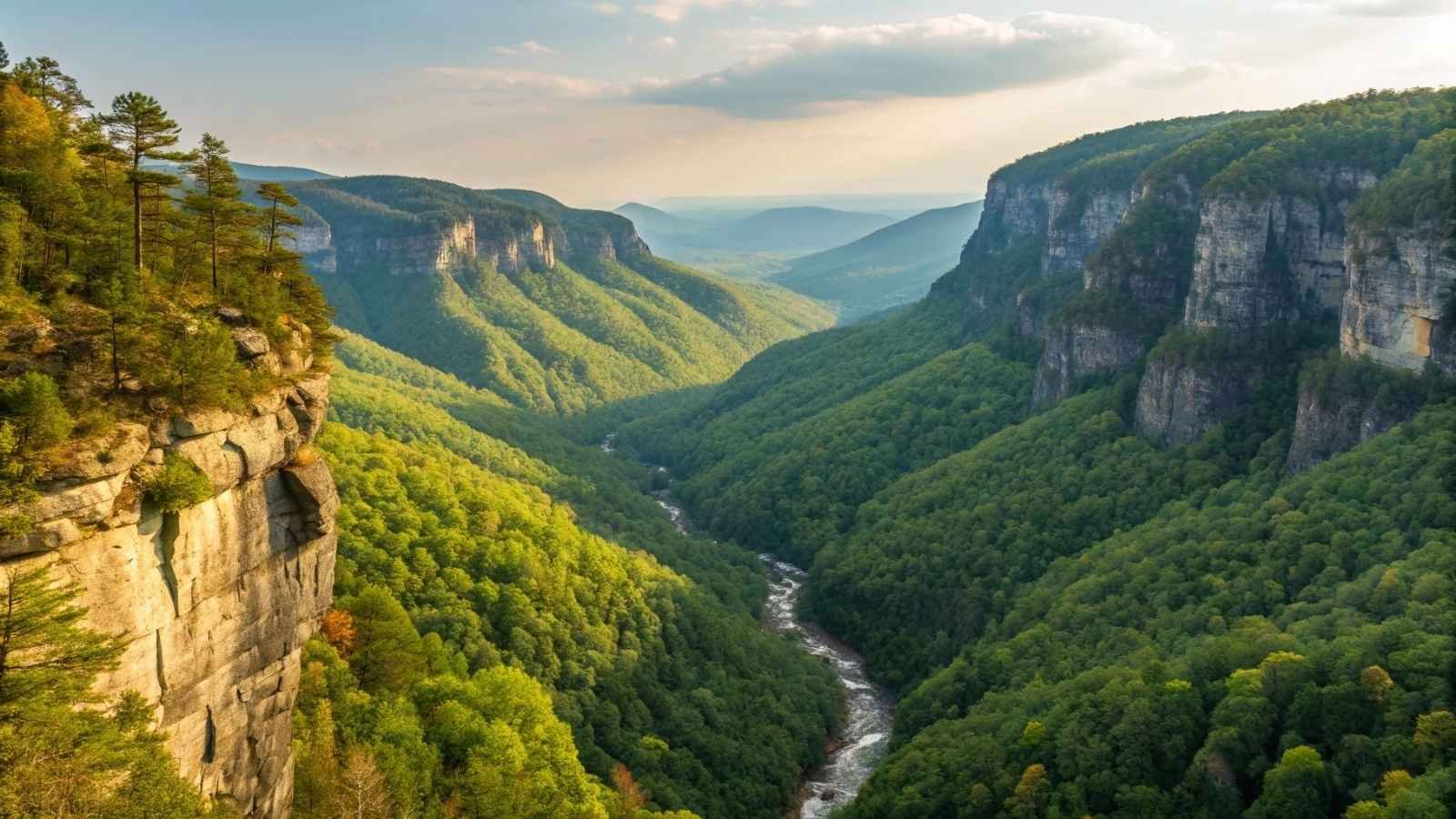
Nicknamed the “Grand Canyon of the East,” Linville Gorge in North Carolina is a rugged wilderness that offers some of the most dramatic vistas on the Appalachian range. Here, the Linville River crashes through sheer granite walls, creating a gorge that feels wild, raw, and untouched. It’s a place for those who crave real adventure—less polished, more challenging, but deeply rewarding.
Hiking in Linville Gorge isn’t for the faint of heart. Trails are steep and rocky, often demanding effort, but the payoffs are immense. Overlooks like Wiseman’s View give sweeping views of the gorge and the distant Blue Ridge Mountains. Down below, the river is a magnet for anglers, kayakers, and solitude seekers. This is one of those canyons where silence and space become part of the experience.
Because it’s part of a designated Wilderness Area, Linville feels unspoiled in a way many parks don’t. The trails may be tough, but that ruggedness is what keeps it wild. For hikers who enjoy a challenge, it’s one of the most rewarding hidden canyons in the country.
- Best Months to Visit: May–October (spring blooms, summer greenery, fall colors)
- Activities: Hiking, backpacking, kayaking, rock climbing, fishing
- Nearby Highlight: Blue Ridge Parkway, offering scenic drives and easy-access overlooks
13. Smith Rock Canyon, Oregon
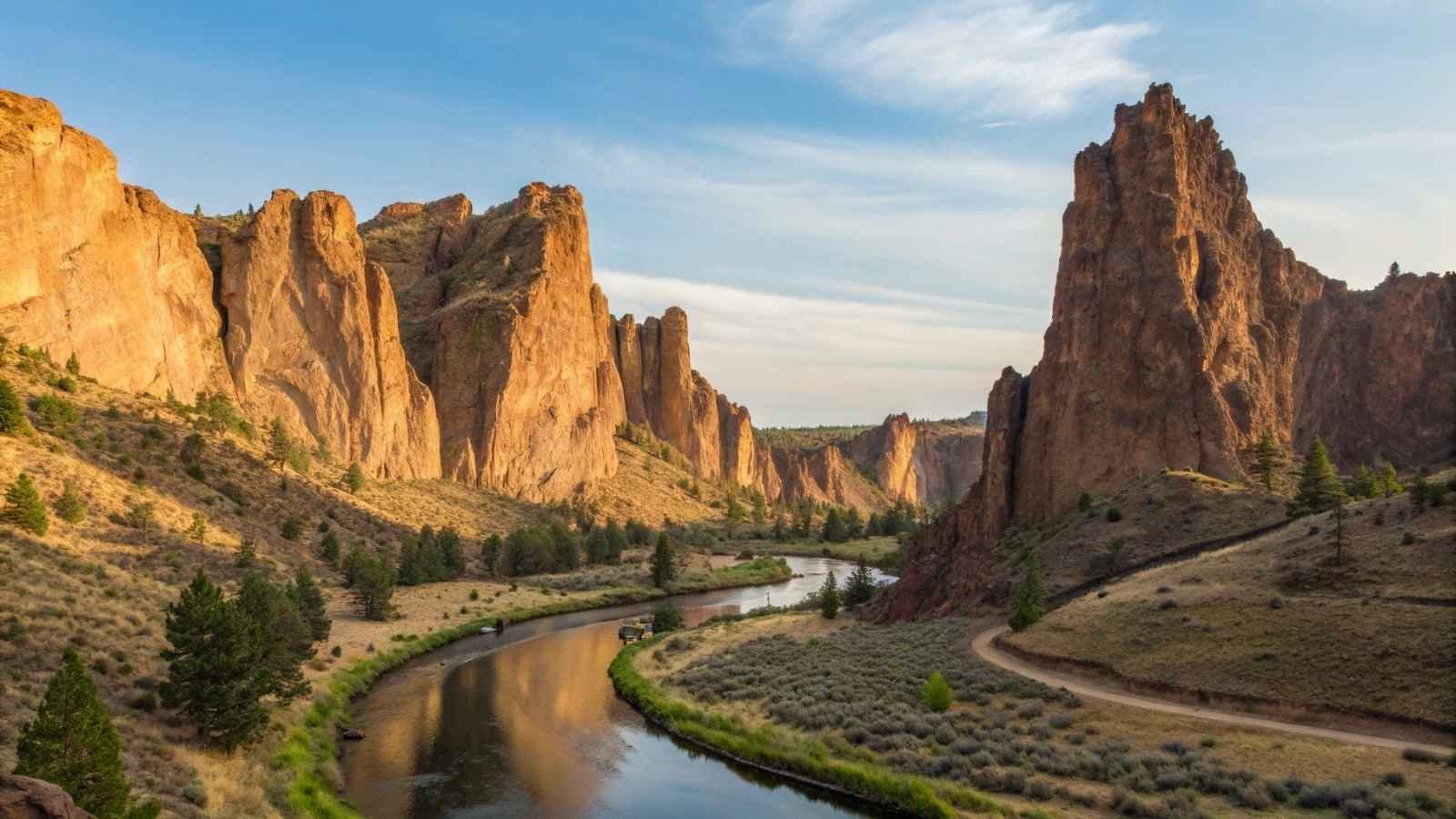
Oregon’s Smith Rock Canyon isn’t just a canyon—it’s a world-class climbing destination that’s become legendary among adventurers. Towering tuff and basalt cliffs rise dramatically from the Crooked River, creating a striking contrast against Oregon’s high desert backdrop. The jagged rock formations almost look sculpted, giving the landscape a dramatic, cinematic feel.
While rock climbers from around the globe flock here, Smith Rock isn’t just for them. Trails like Misery Ridge provide a challenging but spectacular hike, with views over the canyon, the river, and even the Cascade Mountains on clear days. Wildlife watchers also get their fill, with golden eagles, river otters, and mule deer all calling this place home.
What makes Smith Rock Canyon memorable is its mix of accessibility and adrenaline. Whether you’re here for a casual riverside walk or testing yourself on sheer cliff faces, the canyon offers something thrilling. It’s less about size and more about drama—and Smith Rock delivers plenty of that.
- Best Months to Visit: March–June, September–October (cooler, ideal for climbing and hiking)
- Activities: Rock climbing, hiking, photography, wildlife viewing
- Nearby Highlight: Bend, Oregon—a vibrant outdoor hub with craft breweries and mountain views






